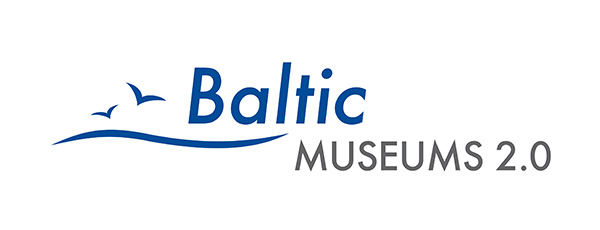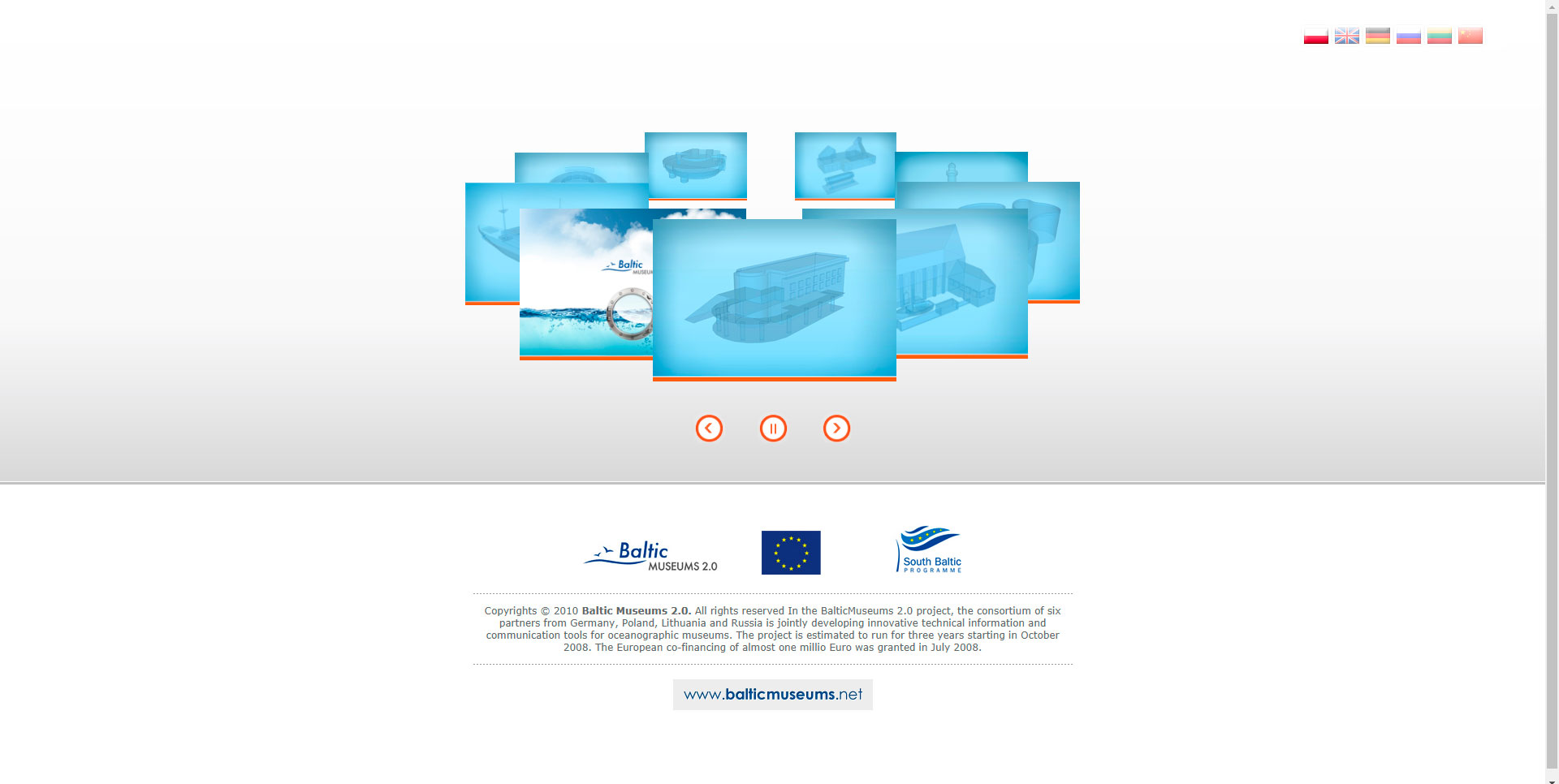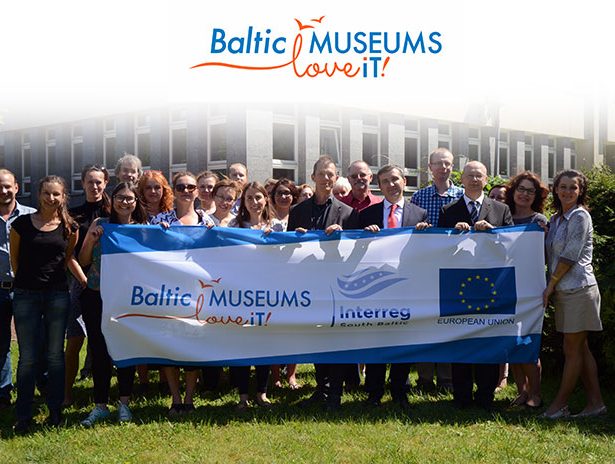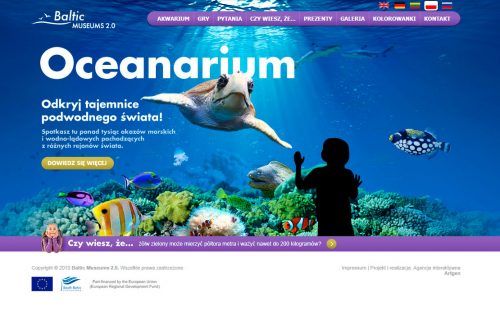Baltic Museums: Love IT! (2017-2020)
The main objective of the project was to develop new IT-enabled tourism products for natural and cultural heritage tourist destinations in the SBR in the form of multilingual BYOD-guided tours, providing an enhanced visitor experience during and after the visit thanks to gamification, multimedia content, and augmented reality techniques.
The guides provided informational and educational content to visitors lacking access to other types of guides due to high-season crowds or insufficient language skills. They were especially suitable for lone and cross-border travelers.
The common gamification service made the visitors’ experience more engaging and extended it beyond a single visit, fostering long-term relationships. A new region-wide brand (working name: South Baltic Spotter) was introduced to make the new gamified products more recognizable and marketable. This not only made the tourist offer of the SBR more visible and coherent to visitors but also formed a sustainable cross-border network of tourist destinations using the brand, open and prepared for new members to join.
The user-centric design process of the new products involved the organization of special events during the off-season, which additionally served promotional purposes and attracted a new kind of visitors (IT fans) to the destinations. Both the gamified tourism products offered under a region-wide brand and the way end-users were involved in the design of tourism products were novel in the SBR.
The project outputs directly benefited visitors to natural and cultural heritage sites in the SBR by enhancing the tourism supply, as well as managers of these sites by providing ready-to-implement solutions and knowledge on how to use them. Indirectly, managers of tourist agencies also benefited from the new brand, which fostered greater interest among tourists.
The project vastly contributed to increasing the popularity of natural and cultural heritage sites of the SBR as tourism destinations.
Our goals
The natural and cultural heritage assets of the SBR served as a base for significant tourism services, which were also available in the low season and in bad weather and played a considerable educational role. There was still a large potential for improving their use.
The three main challenges were: improving the quality of the visitor experience, especially during the high season when sites were overcrowded and for those facing language barriers; attracting new visitor target groups, particularly in the low season; and making the tourism offer of the SBR destinations more coherent and recognizable.
Opportunities were identified based on the worldwide opinion-leading NMC Horizon Report: 2015 Museum Edition. Three of these, which had not yet been adequately exploited in the SBR, were selected: Bring Your Own Device (BYOD), allowing visitors to use their own smartphones for guided tours; Gamification, defined as “the use of game design and game psychology in non-game settings to engage the target audience and motivate specific behaviors”; and (Visitor) Data Analytics, which provided new information for management.
There was a synergy in the simultaneous implementation of these approaches, as BYOD allowed gamification to extend beyond specific locations and countries, while also providing crucial context for data analysis—such as identifying the same visitor in various locations.
Another challenge was preparing the personnel of hosting institutions—both mentally and in terms of technical knowledge and skills (also mentioned in the Horizon Report)—as well as the technical environment necessary for these innovations to succeed. However, this also created an additional opportunity: allowing relevant products to be co-developed by users themselves during hackathon events, which could help attract a new type of visitor (IT enthusiasts) during the off-season.
Introducing the new products under a common regional brand created an opportunity to increase visitor awareness and build long-term relationships.
The chosen approach ensured high user-perceived quality of the products (thanks to end-user involvement at multiple stages of development), provided cost advantages (as outputs were used by multiple institutions), made efficient use of the project partners’ competencies (through knowledge sharing), and ensured the transferability of results to other destinations (by sharing both know-how and solutions).
BalticMuseums 2.0 Plus (2010 – 2015)
Wishing to ensure a high level of comfort for both adults and children in our exhibition, the Gdynia Aquarium has been carrying out BalticMuseums 2.0 Plus project since 2010. In collaboration with South Baltic’s scientific and oceanographic museums, we have created an electronic guidance system (eGuide).

We give you a unique opportunity to get to know our animals, along with a modern eGuide. Adults will be introduced to the underwater world by Krystyna Czubówna, a popular polish lector known from movies about nature, while children are offered to get to know animals through series of stories.
The tours are available in English and German.
The BalticMuseums 2.0 Plus project is a continuation of the BalticMuseums 2.0 project, where partners have developed a common oceanographic information platform, virtual tours and other interesting products for visitors to the South Baltic.
Project partners:
University of Stralsund, Stralsund, Germany
University of Szczecin, Szczecin, Poland
German Oceanographic Museum, Stralsund, Germany
NMFRI Gdynia Aquarium, Gdynia, Poland
Lithuanian Maritime Museum, Klaipeda, Lithuania
Museum of the World Ocean, Kaliningrad, Russia.
More about the project at: www.balticmuseums.org.
BalticMuseums 2.0 (2009 – 2012)

BalticMuseums 2.0 project is a project completed in 2012. One of the most important results of the project is the online information platform of Baltic oceanographic museums developed in co-operation with 6 scientific and educational centers from the South Baltic countries. The content has been translated into 6 languages in order to reach as many foreign audiences as possible.

Partners have been working on joint promotion and online ticketing. Additional virtual tours include the Gdynia Aquarium, the Lithuanian Maritime Museum in Klaipeda, the German Maritime Museum in Stralsund and the Kaliningrad Museum. As part of the museum project, they have prepared prototype eGuide devices – electronic guides for exhibition tours. The electronic guidance system was developed in the continuation of the project – BalticMuseums 2.0 Plus.
Within the framework of the cooperation the partners have also prepared a special website devoted to children interested in the sea life, so called “Kid’s Zone“.
Cooperation was supposed to increase the attractiveness of partner museums abroad, thus helping to promote local tourism.
Project Partners:
University of Stralsund, Stralsund, Germany
University of Szczecin, Szczecin, Poland
German Oceanographic Museum, Stralsund, Germany
NMFRI Gdynia Aquarium, Gdynia, Poland
Lithuanian Maritime Museum, Klaipeda, Lithuania
Museum of the World Ocean, Kaliningrad, Russia.





